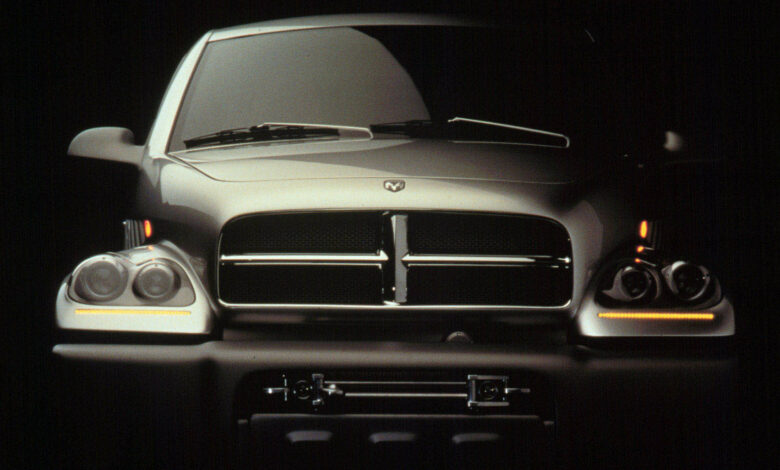
The name Power Wagon has earned itself the reputation of being the most capable off-road pickup on the market. With 2021 being the 75th anniversary of the original 1946 workhorse, we figured we would take a look back at one of the most popular concept vehicles of the last three decades that wore the Power Wagon nameplate proudly.
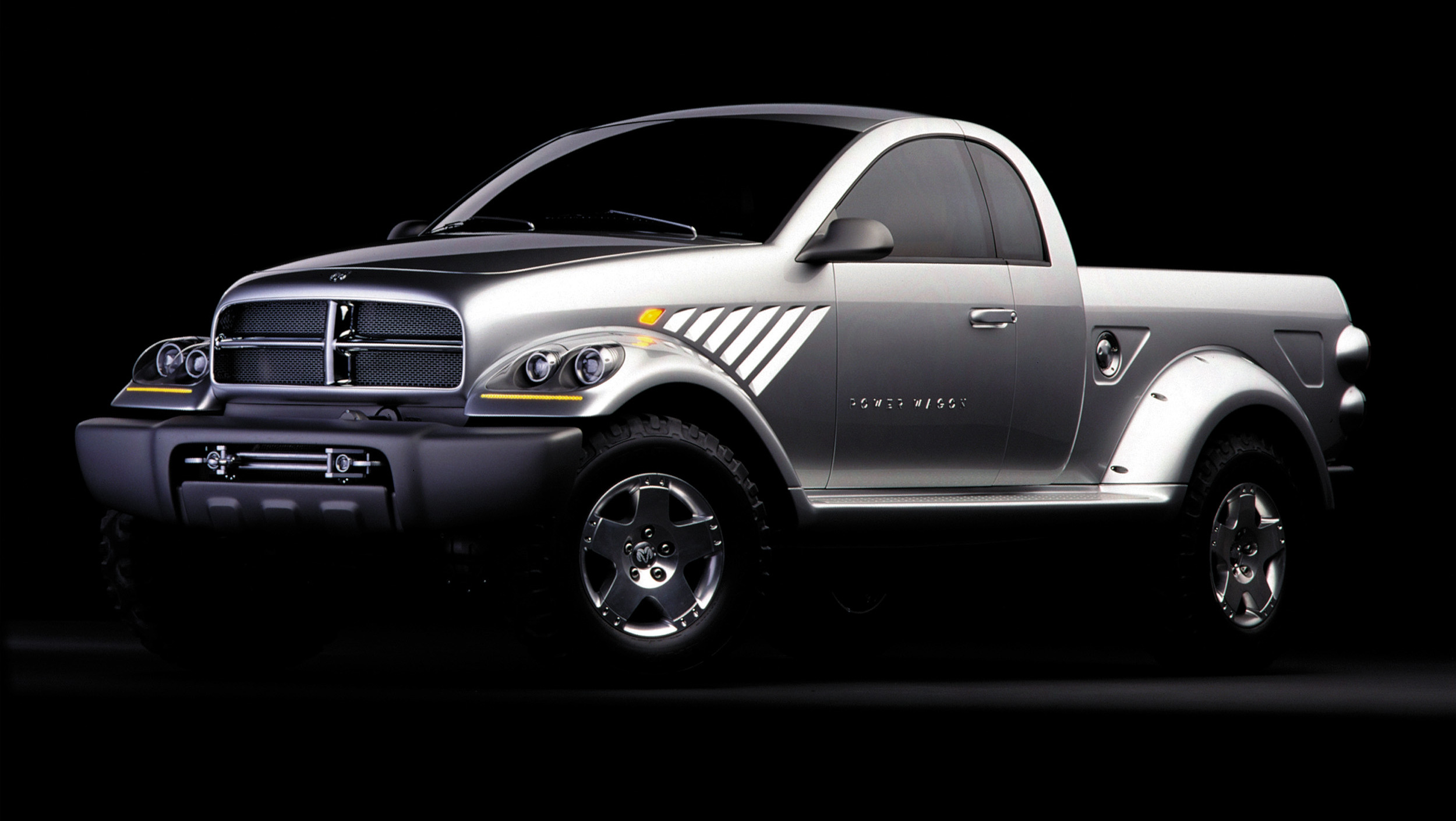
At the turn of the century, the then DaimlerChrysler design studio was turning out some of the most beautiful and desired concept vehicles in the automotive industry. Following a trend that was starting to become popular for American automakers at the time, the then Dodge brand decided to revive the Power Wagon nameplate which had been absent from the brand’s lineup since 1980.
Drawing on the heritage and classic proportions of the original Power Wagon, the 1999 Dodge Power Wagon added a modern and high-tech twist to the nameplate.
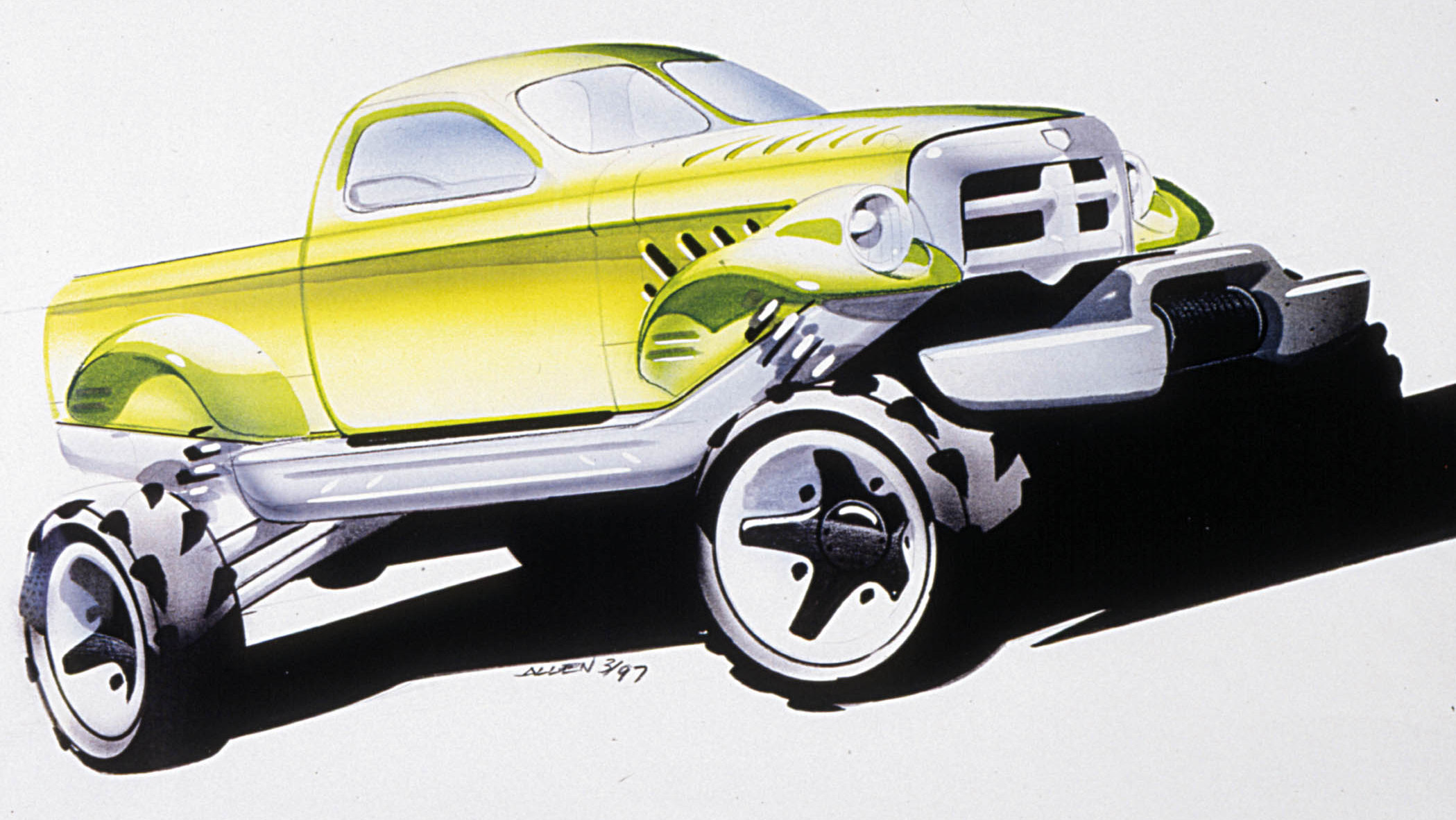
While most people complain the current 2021 Ram 2500 Power Wagon does not offer a diesel option, the Power Wagon Concept did! Under the hood, was a 7.2-liter direct-injection inline-six-cylinder turbodiesel, however, it wasn’t a Cummins. Instead, it was a Caterpillar 3126 diesel which made about 300 horsepower and 780 lb.-ft. of torque which was paired to a 4-speed automatic transmission. At the time the 5.9-liter Cummins 24-valve inline-six-cylinder turbodiesel was rated at 235 horsepower and 460 lb.-ft. of torque, which made the Caterpillar look even more like a powerhouse at the time.
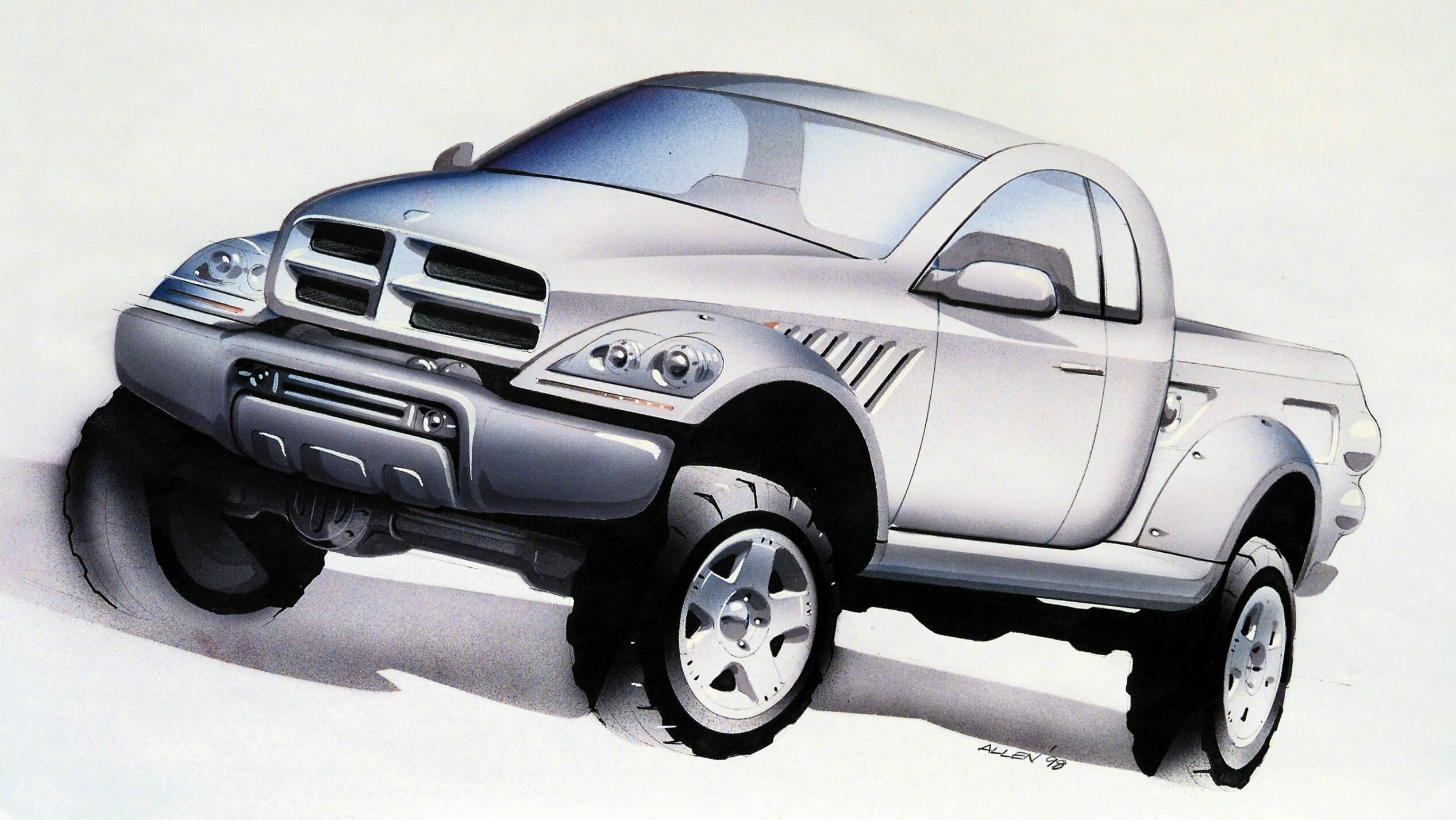
The handsome exterior of the Power Wagon was created by Head of Jeep® Design, Mark Allen. At the time, Allen was Senior Designer for the Dodge Truck studio, creating not only the Power Wagon Concept, but vehicles like the 1997 Dodge Dakota Sidewinder, and 2001 Dodge PowerBox Concept.
“Early in the design process, we debated whether to do a basic work truck versus an upscale truck,” Allen said back in 1999. “We chose to distance ourselves from the ultimate simplicity of the original truck. That’s why you don’t see the spare tire mounted on the side of the truck box or free-standing headlamps. I see this as a thrill-seeker’s truck, for the gear-oriented sports enthusiast. It’s the vehicle to take you rock climbing or mountain biking.”
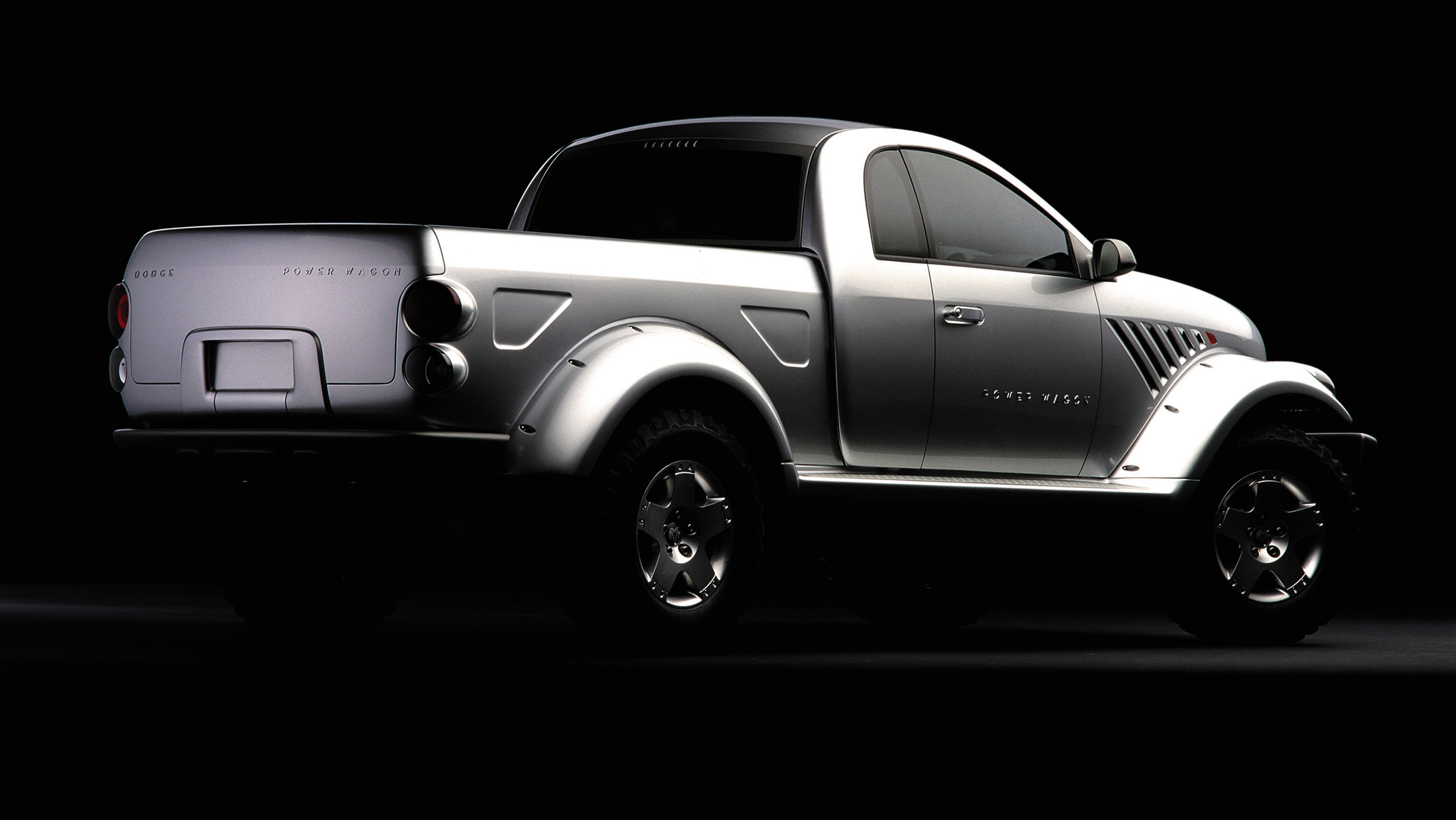
Using a cab that was similar in size to the 1999 Dodge Dakota Club Cab, allowed the design to portray the classic proportions of the original truck. Like the Ram Quad Cab models of the time, the Power Wagon Concept featured rear-hinged half doors to provide easier access to the rear storage area. Instead of adding extra seating, the design team chose to expand the storage space with drawers built into the back of the cab – something that would inspire the interior storage of the upcoming 2002 Ram 1500 Regular Cab models.
“While working on the clay model, we brought a red 1946 Power Wagon into the studio,” said Allen. “From the pictures, we thought it was humongous, but it was dwarfed when placed next to the 1999 concept.”

Allen and his team didn’t go to futuristic with the concept. Separated bumpers, fenders, and running boards, which highlighted the original truck’s design added returned to the modern concept. The gray, raw steel bumpers of the Power Wagon contrast the Silver Metallic-painted body and aluminum details on the gas cap, door handles, hinges, and wheels, add to the truck’s more modern design. A power-actuated tailgate made loading and unloading even easier.
Upfront was the bold crosshair grille, which only remains on the Ram 1500 Classic today. Just like today’s Power Wagon, the concept vehicle featured a front-mounted power winch. Gas-discharged projector-beam headlamps are all but dead in today’s world thanks to the modernization of LEDs, but the Power Wagon Concept was ahead of its time.
Many functional aspects of the vehicle are revealed. Angled slits in the sheet metal exposed the engine compartment. No attempt was made to cover the axles that show below the truck. Aluminum fasteners and bolts were also exposed throughout the vehicle, an idea Allen borrowed from Miller race car engines.
Steve Sowinski, who was responsible for the Power Wagon interior design, had a goal to bring the same kind of finished, detailed look to the interior as the exterior. European ash wood was used on the floor of the cab behind the seats, also is featured in the box of the Power Wagon Concept. Stainless steel shift levers and door handles contrast with the distressed leather seats in keeping a more upscale theme of the concept.

“People will have to stretch their imaginations to find similarities between the interior of this Power Wagon and the 1946 original,” Sowinski said. “Whereas the original was a study in raw steel, we used a mix of new materials to get a clean, high-tech look.”
Cognac-colored leather was the primary interior shade with granite-colored leather for the accents. Various-sized drawers, as well as a netted pouch, lined the back of the cab for convenient storage. The instrument panel gauges all resided within a single, round steering cluster similar to a chronometer watch, and created a clean and fresh design approach.

Unlike the production Power Wagon of today which is based on the 3/4-ton Ram 2500, the 1999 Dodge Power Wagon Concept was based on the Ram 1500 architecture. The concept truck featured link-coil suspension fore and aft, with a Dana 44 front axle and 9.25-inch Chrysler rear, and featuring a 3.90:1 final gear ratio. The Power Wagon wore 19-inch x 10-inch polished 5-spoke aluminum wheels wrapped in custom Goodyear 35-inch x 12-inch tires. Those wheels would later make production as a 17-inch unit on the 2002 Ram 1500 SLT Plus.
Stopping power was provided by vented disc brake rotors with four-piston calipers in the front and single-piston calipers in the rear from the Dodge Viper GTS Coupe.

While many of the design features of the 1999 Dodge Power Wagon Concept did make production in some form, the concept was ultimately to showcase future diesel technology. It wouldn’t be until 2005, that the Dodge brand would bring back the Power Wagon nameplate once again to highlight a future off-road Ram 2500 model.
1999 Dodge Power Wagon Concept Image Gallery:



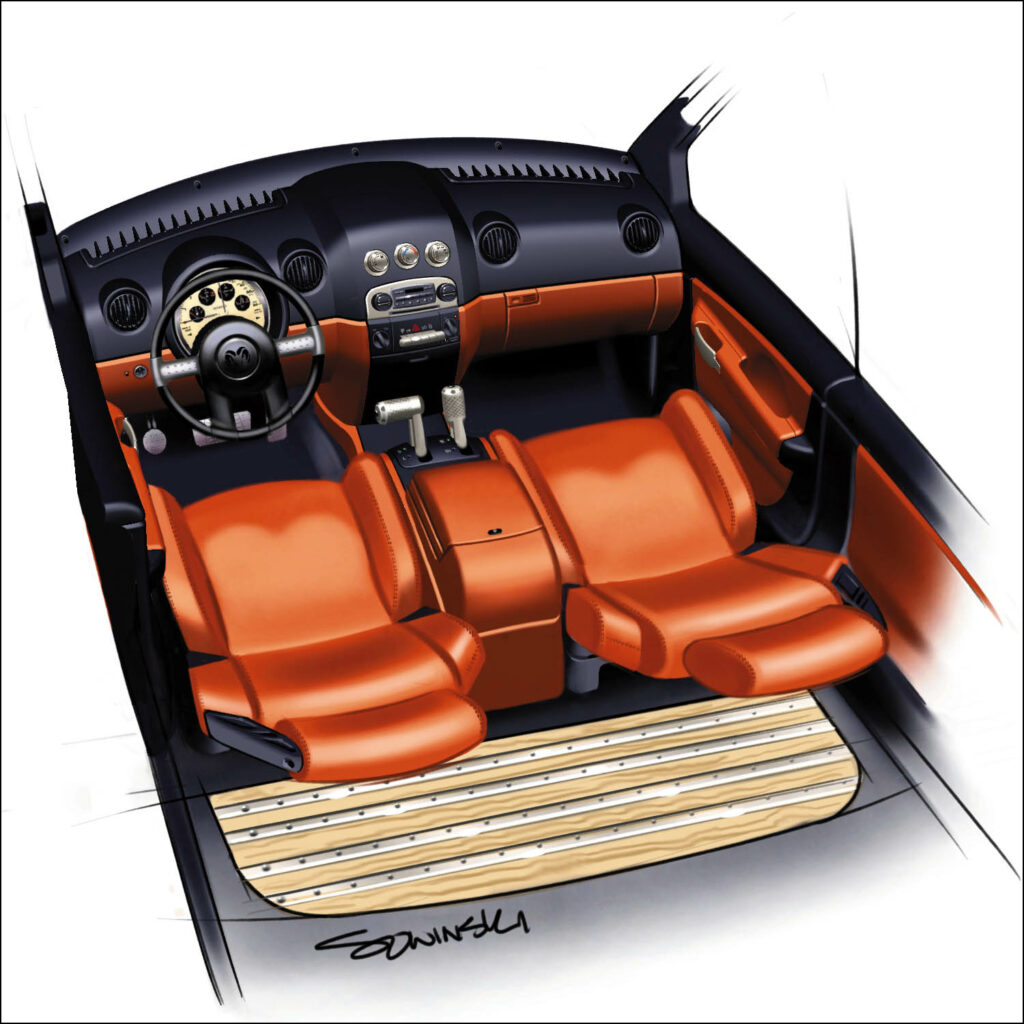





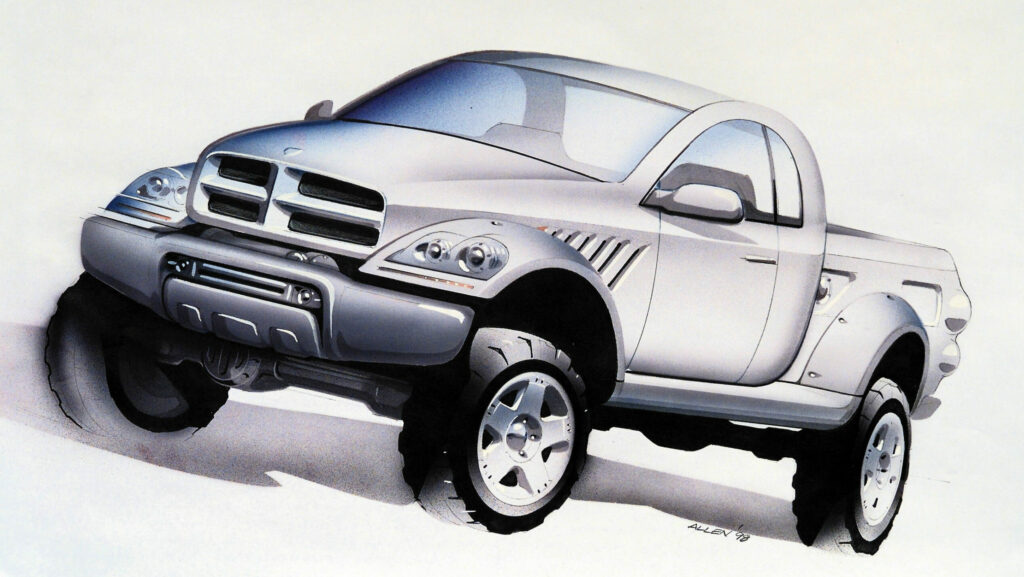



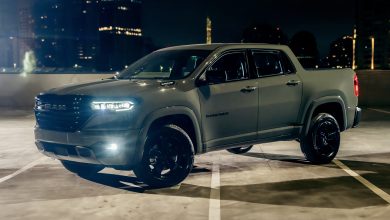
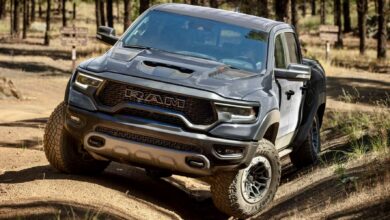

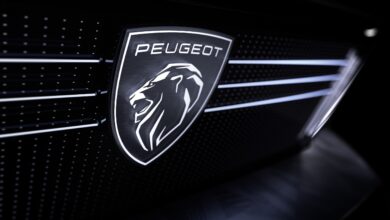
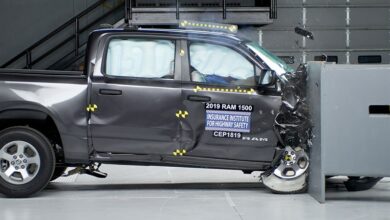
1 reply
Loading new replies...
Join the full discussion at the Mopar Insiders Forum →